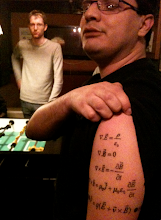Summary of several papers, including:
Kasturi Saha, Vivek Vankataraman, Pablo Londero, and Alexander L. Gaeta
We show that two-photon absorption (TPA) in rubidium atoms can be greatly enhanced by the use of a hollow-core photonic-band-gap fiber. We investigate off-resonant, degenerate Doppler-free TPA on the 5S1/2→5D5/2 transition and observe 1% absorption of a pump beam with a total power of only 1 mW in the fiber. These results are verified by measuring the amount of emitted blue fluorescence and are consistent with the theoretical predictions which indicate that transit-time effects play an important role in determining the two-photon absorption cross section in a confined geometry.
